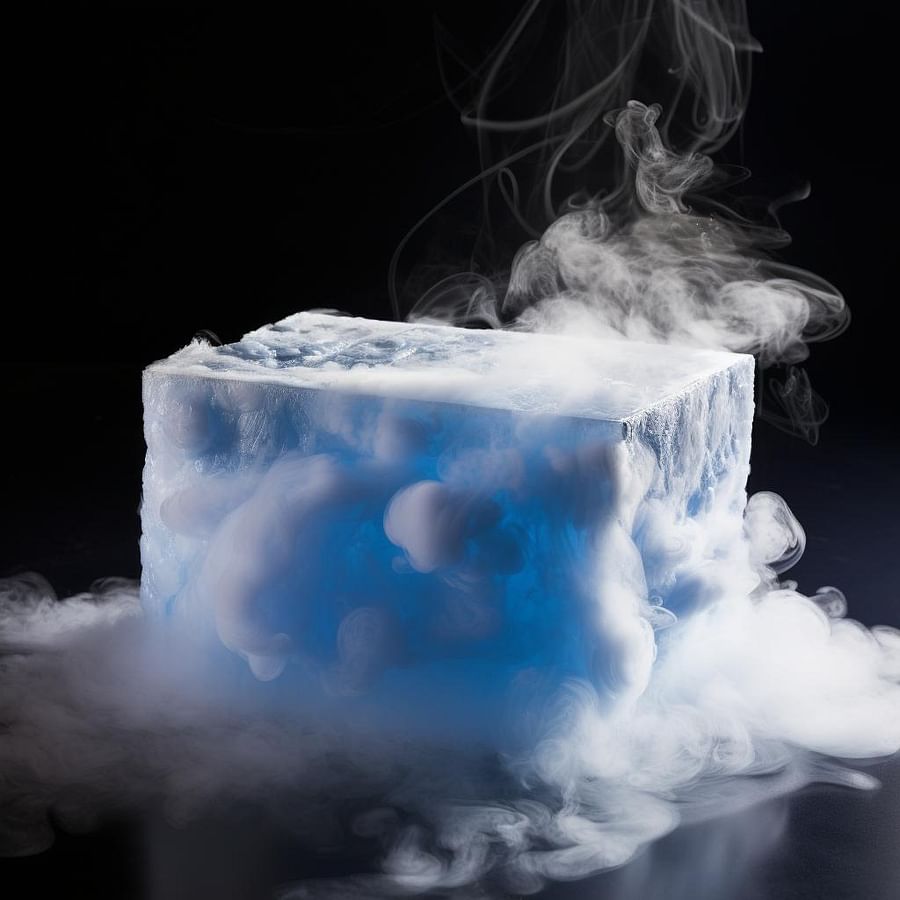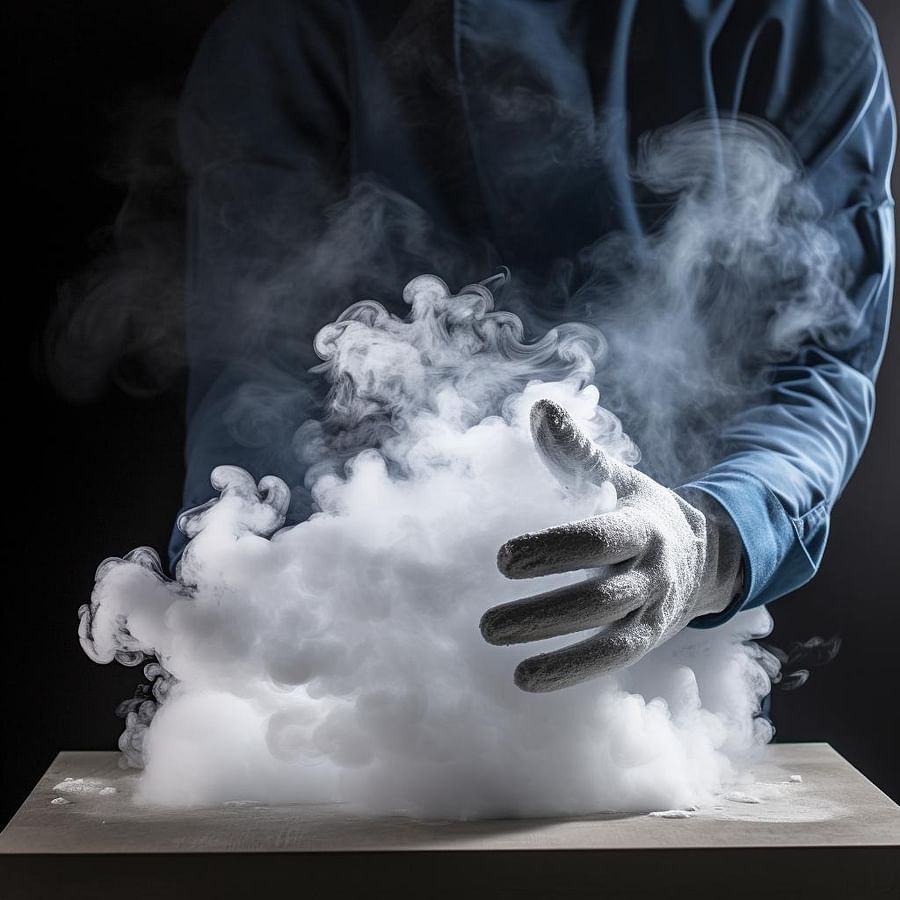Understanding Dry Ice Burns and How to Treat Them

Welcome to the fascinating world of dry ice! A world where science, safety, and practicality intersect. But first, let's unveil the mystery: What exactly is dry ice? And why is understanding dry ice so important?
Dry ice, contrary to its name, isn't ice at all. It's solidified carbon dioxide (CO2), which sublimates - or turns directly from a solid to a gas - at temperatures above -78.5°C. This unique property makes it a versatile tool in various industries, from food preservation to stage effects. But, it also poses unique challenges in terms of safety and storage.
Understanding dry ice is crucial because, despite its usefulness, it can cause harm if not handled correctly. One such harm is dry ice burns, which can occur when the extremely cold substance comes into direct contact with skin. This is why safety precautions for dry ice are paramount.
So, how do we store dry ice safely to prevent such burns? And how do we treat dry ice burns if they occur? These are the questions we'll be exploring in this article, along with some exciting dry ice experiments you can try at home - safely, of course!
Whether you're a science enthusiast, a teacher, or someone who uses dry ice regularly, this article will provide you with the knowledge you need to handle dry ice safely and effectively. So, are you ready to embark on this icy journey?

Stepping into the world of dry ice is like embarking on a thrilling adventure. But remember, every adventure requires safety measures. So, let's dive into the essential safety precautions for handling dry ice to ensure your journey is both exciting and safe.
Firstly, never handle dry ice with bare hands. The extreme cold can cause dry ice burns, similar to heat burns. Always use protective gloves or tongs when handling dry ice.

Secondly, always store dry ice in a well-ventilated area. As dry ice sublimates, it releases carbon dioxide gas. In a confined space, this can lead to a dangerous buildup of gas, causing dizziness or asphyxiation. So, how to store dry ice safely? Use an insulated container, and keep it in a well-ventilated space. Never store dry ice in a sealed container or in your freezer, as the pressure buildup can cause an explosion.
Lastly, keep dry ice out of reach of children and pets. While dry ice experiments can be a fun learning experience, they should always be supervised by an adult. Remember, understanding dry ice and its potential hazards is the first step to safe usage.
So, are you ready to handle dry ice like a pro, armed with these safety precautions? Remember, safety comes first, but once you've got that covered, the world of dry ice is your oyster. Explore its uses, experiment safely, and most importantly, have fun!
Next, we'll delve into recognizing dry ice burns and understanding dry ice burns treatment. Stay tuned!
Stepping into the next chapter of our dry ice adventure, we encounter an unseen danger: dry ice burns. Just as understanding dry ice is key to its safe handling, recognizing dry ice burns is crucial to effective treatment. So, what do these burns look like and how can you identify them?
Dry ice burns, despite their chilling origin, resemble heat burns in appearance. They can cause redness, blisters, and skin discoloration. However, they also carry a unique symptom: a prickling sensation, as if your skin is 'falling asleep'. This is due to the extreme cold of dry ice, which can freeze skin cells on contact and cause nerve damage. If you or someone else experiences these symptoms after handling dry ice, it's likely a dry ice burn.

Now that you know how to recognize a dry ice burn, what should you do? First and foremost, don't panic. Dry ice burns treatment is straightforward and can be performed with common household items. We'll delve into the specifics in the next section, but remember: prompt action is key. The sooner you treat a dry ice burn, the better the outcome.
As we navigate the world of dry ice, remember that safety is paramount. Proper dry ice storage, protective gear, and adult supervision during dry ice experiments can prevent most accidents. But if a dry ice burn does occur, understanding its signs and knowing how to treat it can make all the difference. So, are you ready to continue your journey, armed with this new knowledge?
Stepping into the realm of Immediate Actions: How to Treat Dry Ice Burns, let's equip ourselves with the knowledge to act promptly and effectively. After all, understanding dry ice and its potential dangers is only half the battle. The other half lies in knowing how to treat dry ice burns.
First things first, if you suspect a dry ice burn, remove any clothing or jewelry near the affected area. This prevents further skin damage by reducing contact with the cold. Then, gently clean the area with lukewarm water and mild soap. Remember, the keyword here is 'lukewarm'. Using hot water can cause further injury, while cold water can intensify the freezing effect.

Next, apply a sterile dressing to the burn. This could be a clean cloth or a bandage. It's important not to apply any creams or ointments at this stage, as they can trap the cold and worsen the burn.
Once you've done this, it's time to seek medical attention. Even if the burn seems minor, it's crucial to get it checked out. Remember, dry ice can cause nerve damage, and only a healthcare professional can accurately assess the extent of the injury.
While we're on the topic of safety, let's not forget the importance of proper dry ice storage. Storing dry ice correctly can prevent most accidents, making it an essential part of your dry ice journey. So, how do you store dry ice safely? We'll delve into that in our next section, Storing Safely: How to Store Dry Ice to Prevent Burns.
As we continue exploring the fascinating world of dry ice, let's remember to always prioritize safety. Whether you're conducting dry ice experiments or simply storing it, understanding dry ice burns and their treatment is a vital part of the journey. Are you ready to move forward, armed with this newfound knowledge?
Transitioning from immediate actions to preventive measures, let's delve into the crucial aspect of dry ice storage. The key to avoiding dry ice burns lies in understanding how to store dry ice safely. So, what does safe storage entail?
Firstly, it's important to remember that dry ice is the solid form of carbon dioxide. It's extremely cold and sublimates into gas rather than melting. This means it needs to be stored in an insulated container, but not one that is airtight. An airtight container could lead to a dangerous build-up of pressure as the dry ice turns into gas. A cooler or styrofoam box is a good choice for storing dry ice.
Secondly, always use gloves or tongs when handling dry ice to prevent direct contact with your skin. This simple safety precaution can save you from potential dry ice burns.
Lastly, store the dry ice in a well-ventilated area. As it sublimates, it releases carbon dioxide gas which can displace oxygen in a confined space, leading to potential breathing difficulties. Therefore, never store dry ice in your basement or a closed car.
Remember, the goal is to enjoy the benefits and fun experiments with dry ice while staying safe. Proper storage is a significant step in that direction. By understanding dry ice, its potential hazards, and how to store it safely, you're well on your way to becoming a dry ice expert. Isn't it empowering to know that you can prevent dry ice burns with these simple steps?
As we move forward in our dry ice journey, let's keep safety at the forefront. After all, knowledge is power, and in this case, it's the power to prevent injuries and enjoy the fascinating world of dry ice safely.
Now that we've mastered the art of storing dry ice safely, let's take a step further into the exciting world of dry ice. How about we learn through experience? Yes, you guessed it right - we're talking about dry ice experiments! But remember, safety is paramount. So, let's explore some fun experiments while keeping our focus on safety.
Ever seen a spooky fog effect in movies and wondered how it's done? That's dry ice at work! You can recreate this at home by placing a small piece of dry ice in warm water. The result? A thick, eerie fog that's perfect for a Halloween party. But remember, always use gloves or tongs to handle dry ice and avoid direct contact with your skin. This is your first line of defense against dry ice burns.
Another fascinating experiment involves making a dry ice bubble. Simply add a piece of dry ice to soapy water, and watch as a giant bubble forms and eventually bursts, releasing a cloud of fog. It's a sight to behold! But again, safety first. Always ensure you're in a well-ventilated area when performing these experiments. This is not just a safety precaution for dry ice burns, but also to prevent potential breathing difficulties due to the release of carbon dioxide gas.
These experiments are not just fun, they're educational too. They provide a hands-on experience in understanding dry ice, its properties, and the safety measures required when handling it. So, are you ready to dive into these experiments and learn while having fun?
Remember, the key to enjoying dry ice safely lies in understanding its properties, knowing the safety precautions, and learning how to treat dry ice burns. With this knowledge, you're not just a dry ice user, but a dry ice expert. So, let's continue our journey into the fascinating world of dry ice, armed with knowledge and a commitment to safety.
And remember, if you ever experience a dry ice burn, immediate action is crucial. Knowing dry ice burns treatment can make all the difference. But why wait for an accident to happen when you can prevent it? Let's continue to prioritize safety as we explore and enjoy the wonders of dry ice.
Embarking on the road to recovery after a dry ice burn begins with understanding the nature of the injury. Dry ice burns, much like heat burns, can cause significant damage to the skin and underlying tissues. However, unlike heat burns, dry ice burns result from extreme cold, making them a form of frostbite.
So, what's the best course of action for dry ice burns treatment? First and foremost, remove any clothing or jewelry near the affected area. Then, gently wash the burn with warm (not hot) water and mild soap. Avoid rubbing or applying any pressure to the burn, as this can exacerbate the injury.
Once the area is clean, apply a sterile dressing to protect it from infection. Over-the-counter pain relievers can help manage discomfort, but if the pain persists or the burn appears severe, seek immediate medical attention. Remember, it's always better to err on the side of caution when it comes to your health.
As we've journeyed through the world of dry ice, we've learned about its fascinating properties, its uses, and the importance of safety precautions. We've discovered how to store dry ice properly, and we've even conducted some thrilling dry ice experiments. But perhaps most importantly, we've learned how to recognize and treat dry ice burns.
With this knowledge, you're now equipped to handle dry ice safely and confidently. You're not just a user of dry ice, but a true dry ice expert. So, go ahead and explore the wonders of dry ice, but always remember: safety first!
At Dry Icy, we're here to support you on your dry ice journey. Whether you're looking for where to buy dry ice, need advice on storing dry ice, or want to learn more about dry ice experiments, we've got you covered. Stay safe, stay curious, and keep exploring!

Remember, the magic of dry ice lies not just in its foggy mystique, but in understanding and respecting its properties. So, let's continue to prioritize safety as we delve deeper into the captivating world of dry ice.
Post a comment